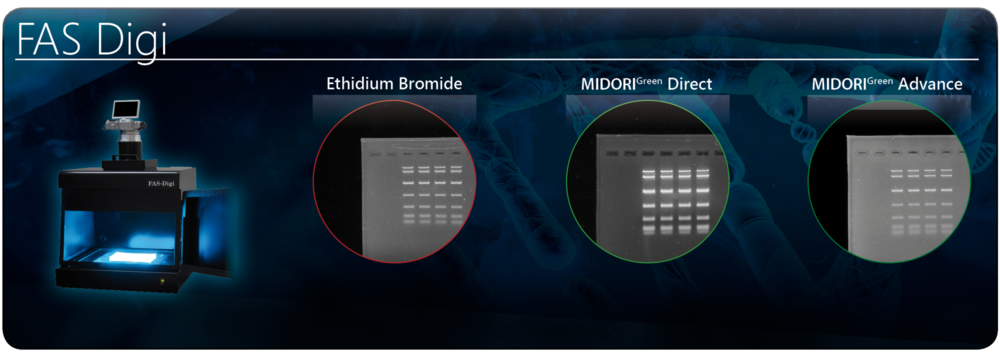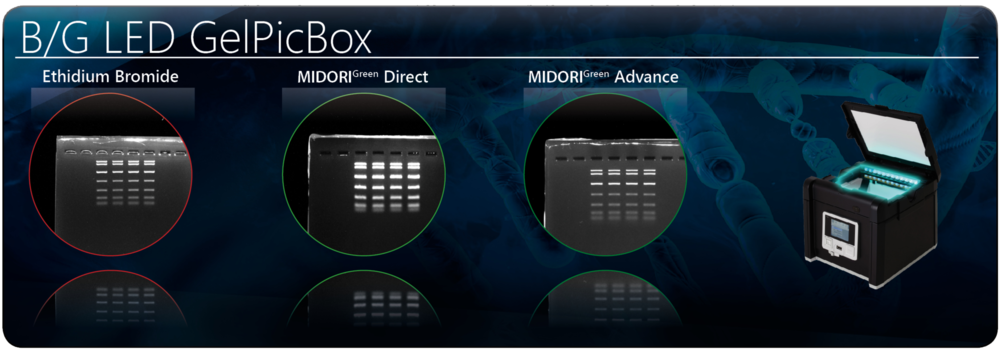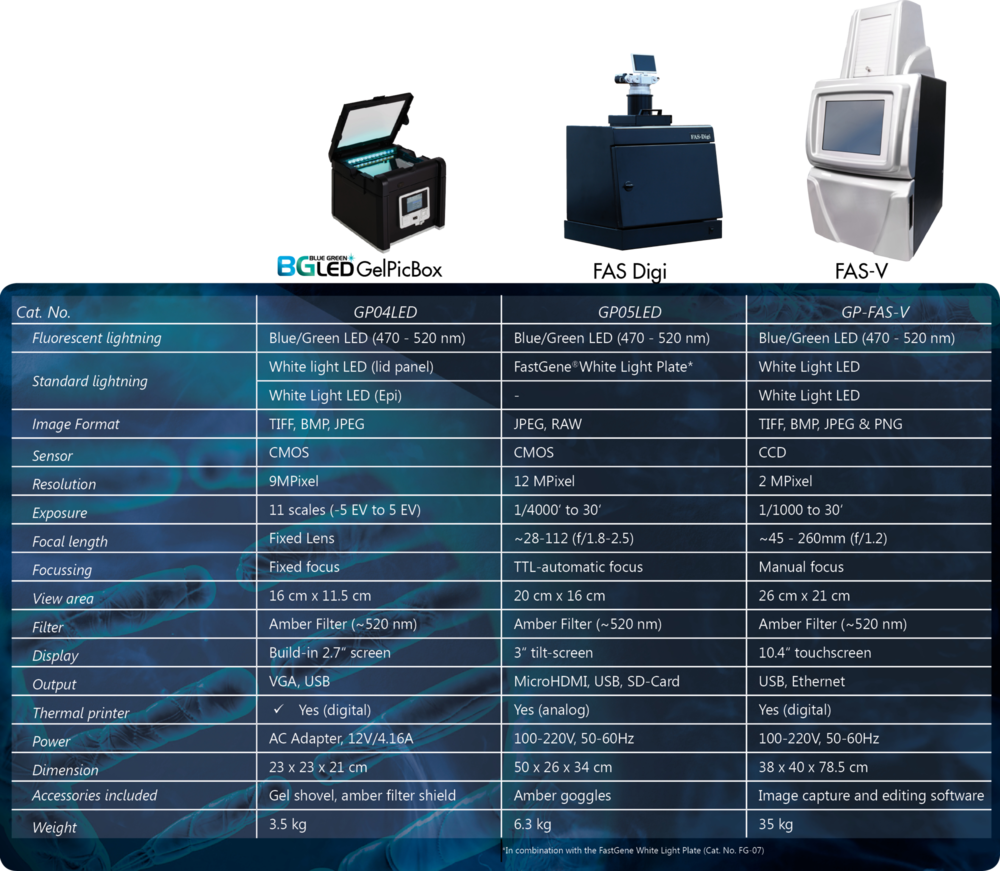Get the best Signal
NIPPON Genetics EUROPE presents a new strategy for the detection of nucleic acid dyes: Instead of using a single wavelength, a combination of wavelengths was created resulting in a spectrum of light with blue/green light of 470 nm to 520 nm, able to excite dyes which were not excitable with a single wavelength of 470 nm, such as ethidium bromide. This can be achieved by the accumulated energy absoprtion of the dyes.

This idea led to the development of the FastGene® Blue/Green LED Transilluminator (FG-08): Signal intensities as high as from strong UV-transilluminators using safe wavelength were finally possible for all DNA dyes. Even more impressively, the signal intensity of the safe MIDORIGreen Dyes was further increased, leading to the same or higher signal intensity when compared to ethidium bromide with UV-light:

Ethidium bromide and the safe alternatives deliver a much higher signal with this unique technology, with better results in downstream applications as well as creating a safer laboratory environment. NIPPON Genetics EUROPE presents here its stand alone imaging systems and illuminators using this revolutionary technology:
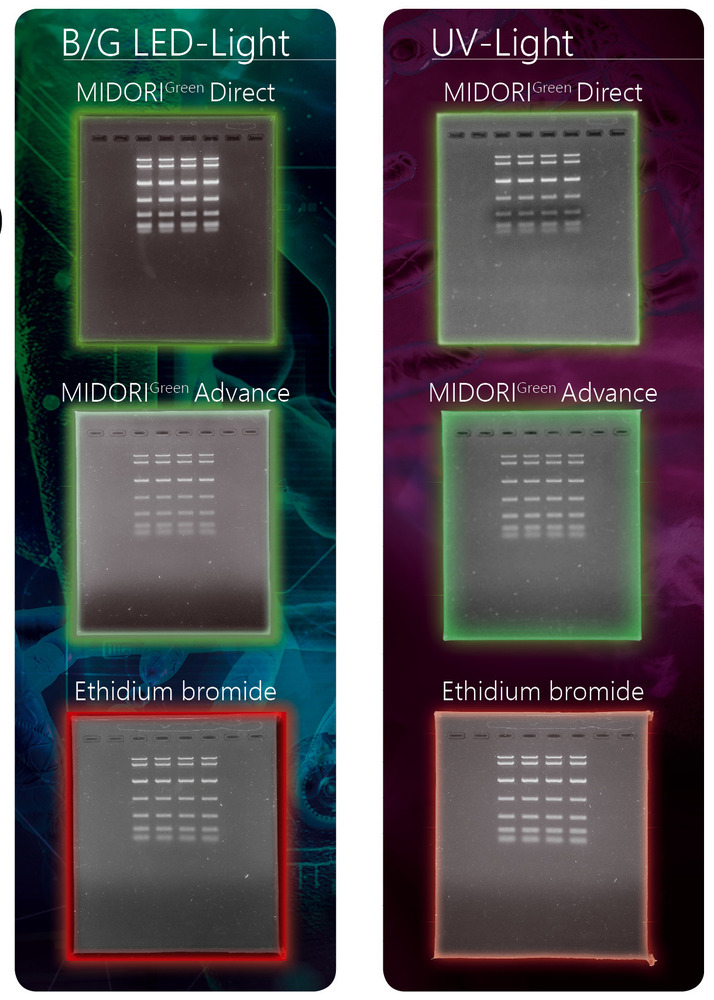
Why is UV-light so dangerous?
DNA is able to absorb light in the UV-spectrum. Consequences are the formation of pyrimidine dimers, ssDNA and dsDNA breaks, DNA-DNA interstrand crosslinks and DNA-to-protein crosslinks.
Organisms are able to repair these DNA damages or suffer the consequences discussed above. DNA in agarose gels lack these repair mechanisms. Additionally, the amount of DNA in a gel is much less when compared to a whole organism. Therefore DNA degradation caused by short-term UV light exposure was investigated:
After an electrophoretic run, the gel was exposed to UV-light for up to 60 seconds. The PCR product was subsequently isolated and cloned into a control vector, previously double digested with NdeI and HindIII, before being transformed into Escherichia coli DH5α (BL21) cells. The results are shown below:

The DNA exposed to UV-light was highly damaged, significantly reducing the cloning efficiency. After 60 seconds exposure, no colony was detected, indicating complete damage of DNA.
Blue LED Light - First solution
In 2009, blue light emitting diodes (LED) transilluminators were introduced. LED are semi-conductors able to transform electricity into light. The advantages are defined wavelengths, superb efficiency and a huge average life expectancy of 50.000 hours. They emit light with a wavelength of 470 nm, which is after the UV-wavelength range.
The experiment described previously was repeated and the DNA was exposed to the blue LED light for the same amount of time:
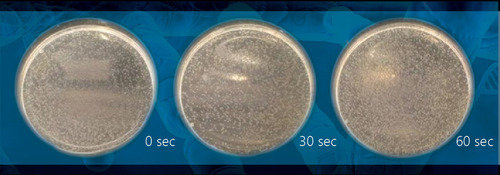
As expected from the physical theory, the amount of CFU per plate did not have any significant change after the exposure. The prevention of the DNA damage therefore vastly increased the cloning efficiency.
Problems with Blue LED
Although having the assets of safe light source, using blue LEDS also had a central drawback. Ethidium bromide, the most common DNA stain did only deliver poor results. The excitation peak of ethidium bromide bound to DNA is between 480 and 525 nm.
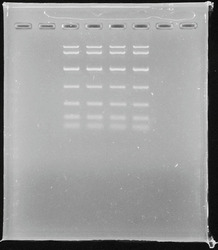
As can be seen, the signal of ethidium bromide bound to DNA is very week and cannot be used. Green DNA dyes, such as MIDORIGreen dyes, deliver a much better signal with blue LEDs.
| Datei | Beschreibung | Link |
|---|---|---|
| Imaging brochure | Gel documentation systems with unique blue/green technology | Download |
| Datei | Beschreibung | Link |
|---|---|---|
| Blue/Green Technology Whitepaper | Advantages of Blue/Green Technology in comparison with UV-light and blue LED | Download |


